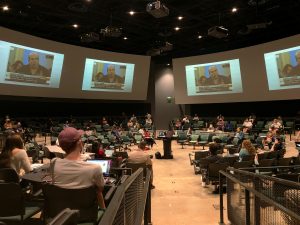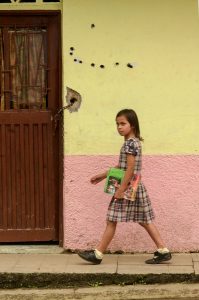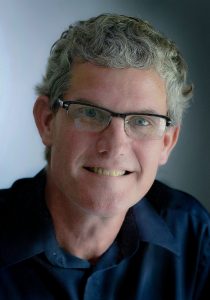Beyond Photojournalism
As a lecturer in the COMM department, Tom Burton brings his newsroom career into the classroom to prepare the newest generation of multimedia journalists.
By Hannah Brennan

This semester, Burton was selected to teach JOUR 102 in the new Innovative Learning Classroom Building.
After more than 40 years in photojournalism, Tom Burton said he’s met and photographed many interesting people like Britney Spears, Mandy Moore, Alex Trebek, Bob Ross, Mr. Rogers and former President Ronald Reagan.
Burton worked as a photojournalist and then the director of photography for the Orlando Sentinel. He then freelanced in still photos and photography, was an adjunct lecturer at the University of Florida and then editor of News Photographer, the magazine of the National Press Photographers Association.
He was the 2018-19 Knight Fellow at Ohio University’s School of Visual Communication, where he finished his master’s degree before joining Texas A&M as a lecturer Fall 2019. His class JOUR 102 is a media literacy course, which is accredited as a general education social science credit for even students outside of the department of communication. This semester he was selected to teach JOUR 102 in the new Innovative Learning Classroom Building. Burton also teaches Media Writing I, Mobile Journalism and editing courses.

August 26, 2000; Vegalarga, Colombia; A school girl walks home past a bullet riddled wall near the police station in Vagelarga. Six weeks earlier, the guerrilla group FARC attacked the police station, destroying several nearby buildings and damaging others with gunfire. (Tom Burton/Orlando Sentinel)
Burton said his interest in photography began while he was in high school writing about junior varsity sports for a weekly newspaper in Florida.
“The first picture I ever took was on the front page,” Burton said. “That small newspaper helped me get a job at the daily newspaper in Gainesville.”
While working at the Gainesville Sun, Burton said he was also attending the University of Florida with the intention of becoming a writer.
“By the time I was graduating, I focused on visual journalism, but I continued writing throughout my career,” Burton said. “It gave me an advantage in a lot of ways that I caught a lot of assignments where they wanted to send one person, and I was the photographer on the staff that wrote the best.”
Burton said the photography staff in Gainesville helped him gain skill and knowledge in the photojournalism field by allowing him to shadow while they shot assignments. Their chief photographer later became the director of photography at National Geographic, he added.
“I worked there in a production job that doesn’t exist anymore, called paste-up,” he added.
Paste-up in newspaper production was literally pasting the pieces of the newspaper together for the printing press, he said. Having stepped into photography during a transition period, Burton said he considers himself lucky. Before current technology, simply capturing a photo at all was a professional skill set.

Brittney Spears at Disney World in 1999. Photo by Tom Burton
“Barriers to become a professional photographer are lower now, but that doesn’t mean standards are lower,” Burton said. “You have to tell good stories, and you have to know what you’re pointing that box at.”
To create good stories, he added, photojournalists need to know the standard in the field by reading and viewing other stories. In order to improve, Burton said practice is mandatory because simply studying photography won’t suffice. He stressed that treating every assignment as important – whether it be a high school football game or the Super Bowl – is key.

Tom Burton, Director and owner of TWBurton Media.
“I covered the Super Bowl in Tampa when I was 23,” said Burton. “They’re big assignments, and there’s a lot of pressure. You practice the skills you need in those lesser assignments so that when you’re on the big assignment you’re on automatic.”
Photojournalism records all aspects of life, often at the extremes of happiness and despair. While photo editor at the Orlando Sentinel, Burton was in charge of the courtroom photos from the Casey Anthony trial, including evidence photos depicting a child’s skull and bones. Because he was responsible for distributing the photos to news outlets, he repeatedly had to look at the pictures of a child’s remains.
“It was difficult to look at, and it was difficult for everybody, but I was the one who had to pull it up every time someone wanted to see it and have people literally crying at my desk,” he said. “Journalists in the field, especially photographers, can be susceptible to PTSD situations.”
After his work at the Orlando Sentinel, Burton said he moved into freelance work and began teaching. Now, he said he finds inspiration from his students at Texas A&M.
“It gives me an excuse to find current, contemporary examples that [their] generation will resonate with,” said Burton.
